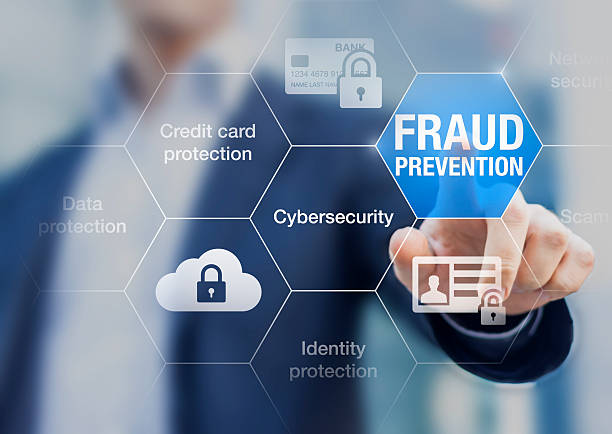"The Dark Side of Digital Transactions: Fraud and Cyber Attacks"

The Rising Threat of Fraudulent Transactions and Cyber Attacks: A Call for Vigilance
In the digital age, technology has transformed the way we live, work, and conduct financial transactions. Online banking, e-commerce, and digital payments have brought immense convenience, allowing people to transfer money and purchase goods with just a few clicks. However, this rapid digitalization has also opened doors for cybercriminals who exploit vulnerabilities to commit fraud and launch malicious attacks. With cases of financial fraud and cyber hacking increasing at an alarming rate, it is crucial to raise awareness and take proactive steps to protect ourselves from these threats.
Understanding Fraudulent Transactions
Fraudulent transactions occur when unauthorized individuals gain access to financial information and use it for illicit purposes. These scams can happen in multiple ways, including phishing, card skimming, fake websites, and identity theft. Hackers employ sophisticated tactics to deceive unsuspecting victims and drain their bank accounts without their knowledge.
Some of the most common fraudulent transactions include:
-
Credit/Debit Card Fraud – Cybercriminals steal card details through online breaches, skimming devices, or phishing attacks, then use the stolen data for unauthorized purchases.
-
Phishing Scams – Fraudsters send fake emails, messages, or websites that appear legitimate to trick users into providing their financial credentials.
-
Fake Online Shopping Websites – Scammers create fraudulent e-commerce sites offering lucrative discounts to lure customers into entering payment information, which they then misuse.
-
Identity Theft – Hackers steal personal data, including social security numbers, passwords, and banking information, to carry out financial fraud in the victim’s name.
The Growing Menace of Cyber Attacks
Cyber attacks have evolved from isolated hacking incidents to large-scale, organized crimes that target individuals, businesses, and even governments. Hackers use advanced techniques like ransomware, malware, and social engineering to breach security systems and access sensitive information.
Some of the most dangerous cyber threats include:
-
Ransomware Attacks – Hackers infect computers with malware that locks important files and demand ransom to restore access.
-
Data Breaches – Cybercriminals infiltrate company databases, exposing customers’ sensitive data, which is then sold on the dark web.
-
Man-in-the-Middle Attacks – Hackers intercept communication between users and financial institutions to steal credentials and manipulate transactions.
-
Social Engineering Attacks – Cybercriminals manipulate victims through phone calls, emails, or social media to gain access to confidential information.
 How to Stay Safe from Fraud and Cyber Attacks
How to Stay Safe from Fraud and Cyber Attacks
With cybercrime on the rise, it is essential to adopt a vigilant approach and implement robust security measures. Here are some critical steps to protect yourself from financial fraud and cyber threats:
-
Enable Multi-Factor Authentication (MFA): Adding an extra layer of security, such as OTPs or biometric authentication, can prevent unauthorized access.
-
Beware of Phishing Scams: Never click on suspicious links or provide personal information via email, phone calls, or messages.
-
Use Strong Passwords: Create complex passwords with a combination of uppercase and lowercase letters, numbers, and special characters. Avoid using the same password for multiple accounts.
-
Monitor Bank Statements: Regularly check your bank and credit card statements for any unauthorized transactions and report them immediately.
-
Avoid Public Wi-Fi for Financial Transactions: Public networks are often unsecured, making it easier for hackers to intercept sensitive data.
-
Install Security Software: Keep your devices protected with antivirus software and firewalls to detect and prevent cyber threats.
-
Verify Online Sellers: When shopping online, ensure the website is secure (HTTPS), check reviews, and avoid offers that seem too good to be true.
The Role of Businesses and Financial Institutions
While individuals must take preventive measures, businesses and financial institutions also have a responsibility to safeguard customer data. Banks and online platforms must implement strong cybersecurity measures such as:
-
Advanced encryption and fraud detection systems.
-
Regular security audits to identify vulnerabilities.
-
Educating customers about potential scams and safe online practices.
-
Implementing AI-driven fraud detection to identify and block suspicious transactions in real-time.
Conclusion: Awareness is the Best Defense
The increasing cases of fraudulent transactions and cyber attacks highlight the need for heightened vigilance. By staying informed, adopting security best practices, and exercising caution in digital transactions, individuals and businesses can significantly reduce the risk of falling victim to cybercrime. Awareness is the strongest defense against online fraud—let us all play our part in making the digital world safer.
What's Your Reaction?


















